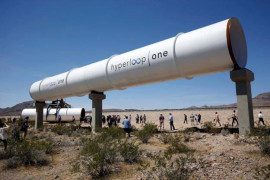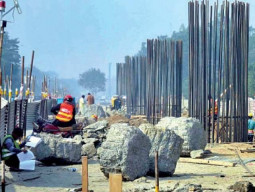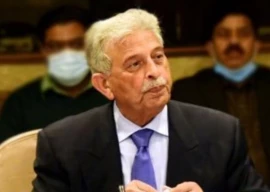
The new revolution in transportation, Hyperloop, comes in the form of passenger pods that travel inside airless tubes capable of reaching supersonic speeds. Hyperloop plans to connect cites through a network of tubes that will make it possible to travel a distance of 380 miles in 35 minutes.
The project is also environmentally friendly as it is planned to run on solar energy and as such overcomes the disadvantages associated with conventional modes of travel.
LUMS students prepare for Hyperloop Pod competition
The basic idea behind this form of transportation is that less friction makes it a lot easier to move objects as there is little to no resistance. Hyperloop plans to achieve this either through magnetic levitation or levitation achieved by pressurised air similar to what we see in air hockey pucks.
However, the idea at this stage seems more theoretical than practical and needs a lot more research and development coupled with monetary support and interest of big names in the industry.
Musk’s Vision
Perhaps the biggest credibility factor for Hyperloop is the fact that it is the brainchild of Elon Musk, CEO of electric car company Tesla Motors and Space X. Given the visionary he is, Musk also plans to build reusable space rockets that will one day allow humans to inhibit other planets.
Musk's idea, however, is not just a claim. The Tesla Motors CEO assembled a team of engineers from Tesla and Space X who took nine months to come up with the initial model of the project. "The Hyperloop (or something similar) is, in my opinion, the right solution for the specific case of high-traffic city pairs that are less than about 1,500 km or 900 miles apart," Musk wrote in the paper.
Hyperloop just had its first successful test in US desert
The aim of the research was to attract other researches into the project so that they can take it to the next step. So far, two companies have shown interest to develop the project.
Developments
The two rivaling companies have maintained the same approach as advocated in Musk’s initial research, however, some changes have been proposed. The proposed changes include using magnetic levitation rather than pressurised air and wider pods that are roomier.
"In 30 years, there will be a network of hyperloop systems," says Rob Lloyd, CEO of Hyperloop One (formerly known as HyperlinkTechnologies) in Los Angeles. "They will carry people. They will carry freight. This will be like the backbone for the physical world." Lloyd thinks hyperloops are good for 50- to 500-mile trips.
Among Hyperloop One's portfolio of investors are venture capitalists Shervin Pishevar, former White House Deputy Chief of Staff Jim Messina and Peter Diamandis founder of X Prize Foundation. In total, Hyperloop One has raised more than $90 million so far. The company also conducted a test run in May this year at Las Vegas, Nevada.
The rival company Hyperloop Transportation Technologies, has a far more grander plan of replacing subways. "I think we are the ones for the public transport system -- the metro substitute and city-to-city connector," says CEO Dirk Ahlborn.
SpaceX satellite launch succeeds, but rocket crash lands
HTT approach to the project is different as it is a crowdsourced effort of more than 100 engineers. Last year, the company announced to build a five mile long prototype in California that will be completed in around two years after which HTT plans on going full scale. "I think the first ones finished will be in Asia, India, Indonesia, Africa or the Middle East," he said.
Challenges
Skeptics think Musk's vision will have trouble standing up to real-world difficulties. "Once you get down to specifics -- the homes that'll be taken out and the businesses disrupted -- the costs go up," said Brookings Institution analyst Robert Puentes.
Advocates counter these claims with proposing solar powered pods with regenerative breaking that recharge the batteries which lower cost of operation. Furthermore, HTT plans on convincing real estate developers to incur the cost of construction as the companies can benefit from a rise in value of nearby houses and office space.
"The moment you can have a public transport system that's not a liability, but generating income, it only makes sense to switch over," says Ahlborn.
This article originally appeared on CNET.

































1714024018-0/ModiLara-(1)1714024018-0-270x192.webp)









COMMENTS
Comments are moderated and generally will be posted if they are on-topic and not abusive.
For more information, please see our Comments FAQ